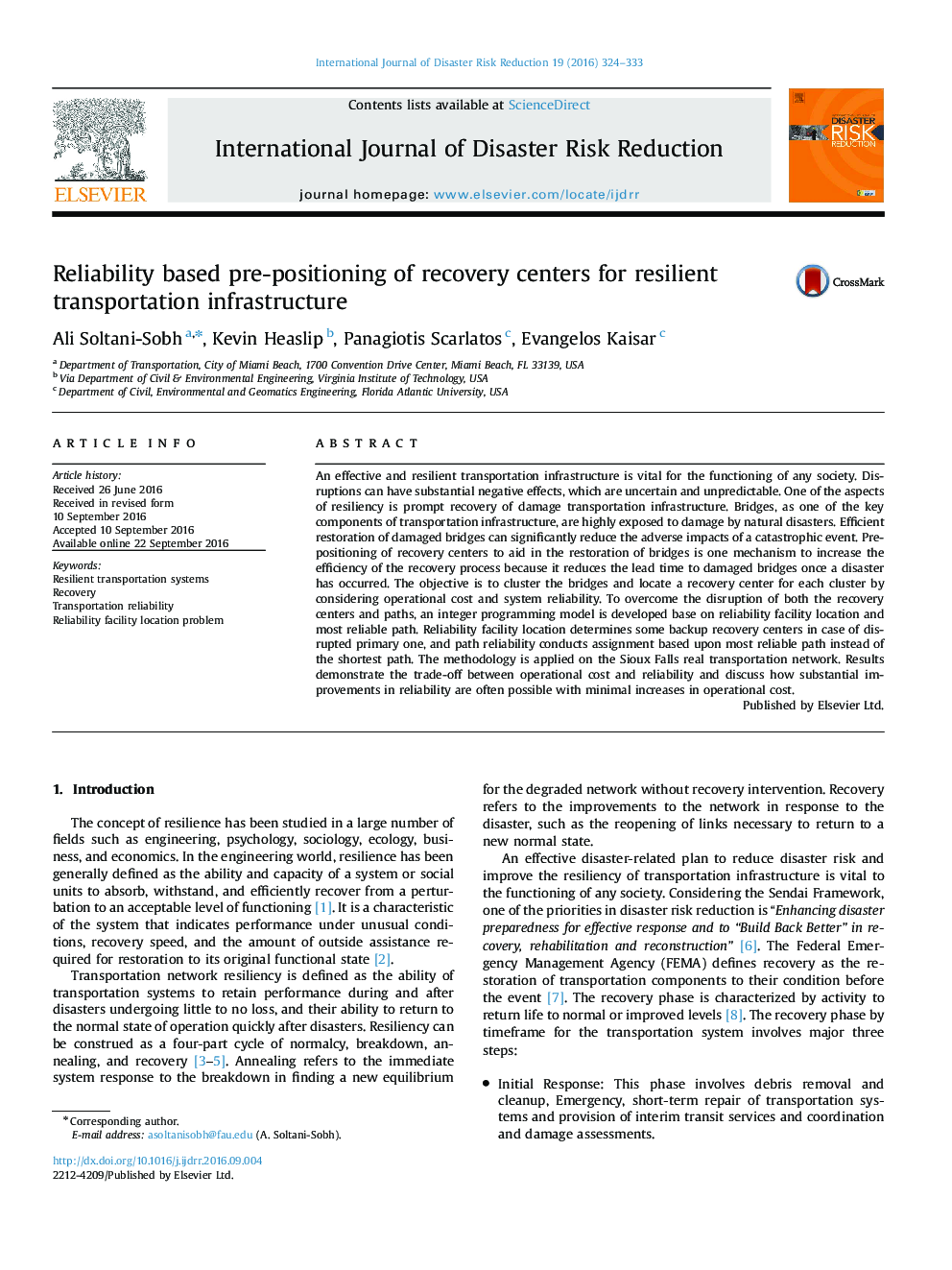| Article ID | Journal | Published Year | Pages | File Type |
|---|---|---|---|---|
| 7472448 | International Journal of Disaster Risk Reduction | 2016 | 10 Pages |
Abstract
An effective and resilient transportation infrastructure is vital for the functioning of any society. Disruptions can have substantial negative effects, which are uncertain and unpredictable. One of the aspects of resiliency is prompt recovery of damage transportation infrastructure. Bridges, as one of the key components of transportation infrastructure, are highly exposed to damage by natural disasters. Efficient restoration of damaged bridges can significantly reduce the adverse impacts of a catastrophic event. Pre-positioning of recovery centers to aid in the restoration of bridges is one mechanism to increase the efficiency of the recovery process because it reduces the lead time to damaged bridges once a disaster has occurred. The objective is to cluster the bridges and locate a recovery center for each cluster by considering operational cost and system reliability. To overcome the disruption of both the recovery centers and paths, an integer programming model is developed base on reliability facility location and most reliable path. Reliability facility location determines some backup recovery centers in case of disrupted primary one, and path reliability conducts assignment based upon most reliable path instead of the shortest path. The methodology is applied on the Sioux Falls real transportation network. Results demonstrate the trade-off between operational cost and reliability and discuss how substantial improvements in reliability are often possible with minimal increases in operational cost.
Keywords
Related Topics
Physical Sciences and Engineering
Earth and Planetary Sciences
Geophysics
Authors
Ali Soltani-Sobh, Kevin Heaslip, Panagiotis Scarlatos, Evangelos Kaisar,
